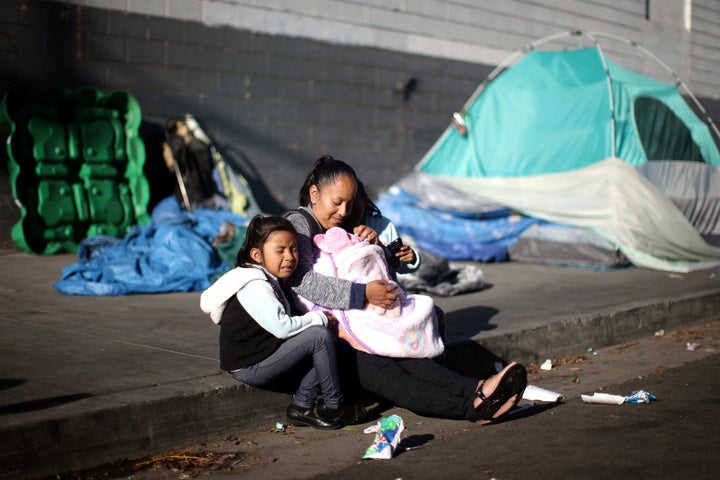New data from the U.S. Census Bureau show that, despite overall increases in household income for Americans since last year, the nation’s poverty rate has essentially stagnated.
The median U.S. household income rose by 1.8 percent from 2016 to 2017 ― from $60,309 to $61,372, Census Bureau figures released Wednesday show. It was the third consecutive year of increases.
The data also revealed that, although household income has improved overall for Americans, the situation for America’s poor has remained unchanged.
The nation’s official poverty rate dipped only slightly in 2017, from 12.7 percent of Americans living in poverty in 2016 to 12.3 percent in 2017, a drop of just 0.4 percentage point. The number of people in poverty was “not statistically different” from 2016, according to the government, with 39.7 million Americans still living below the poverty line.
And the “supplemental poverty measure,” which some experts call a more accurate statistic because it factors in noncash benefits such as food stamps, was unchanged compared with the previous year.
This stagnation came after several years of significant declines in the poverty rate: Since 2014, it has fallen 2.5 percentage points, from 14.8 percent to 12.3 percent.
Progress on poverty has come “almost to a halt,” said Olivia Golden, executive director of the Center for Law and Social Policy, a nonpartisan group that advocates for public policy solutions for low-income families.
“At a time of economic recovery, when you’d expect to see some of those gains going to people who are struggling, they didn’t in 2017,” Golden told HuffPost.
In response to Wednesday’s report, the White House Council of Economic Advisers boasted in a release that “the news is good” and that “the effects of the strong economy are reaching Americans throughout the United States.”
Meanwhile, President Donald Trump has recently boasted on Twitter about the economy being “soooo good.”
And in July, the White House claimed in a report that the “War on Poverty is essentially over and a success,” all while pushing for more work requirements for safety-net programs such as food stamps.

The Census Bureau figures also show that racial disparities in household income remain severe, with a significant gap between median household income for white and black families. While white families had a median income of $68,145 in 2017, the pay for black families was $40,258.
While median household income increased for Americans overall, including for whites, it actually decreased slightly for black households ― from $40,927 in 2016 to $40,258 in 2017.
Almost 3 in 10 black children were poor in 2017, as well as about 1 in 4 Latino kids. That’s compared with about 1 in 9 white children, Golden noted. Such “stark disparities” in poverty rates by race “have consequences for kids’ whole lives,” she added.
For poverty to stagnate despite employment rising overall is attributed in part to workers continuing to get low wages. More than two-thirds of children in poverty live with a working adult, Golden said.
“It’s not about not working,” Golden said. “But low wages, jobs that don’t offer enough hours, jobs that are transient ― it’s what’s going wrong at the low end of the labor market.”

